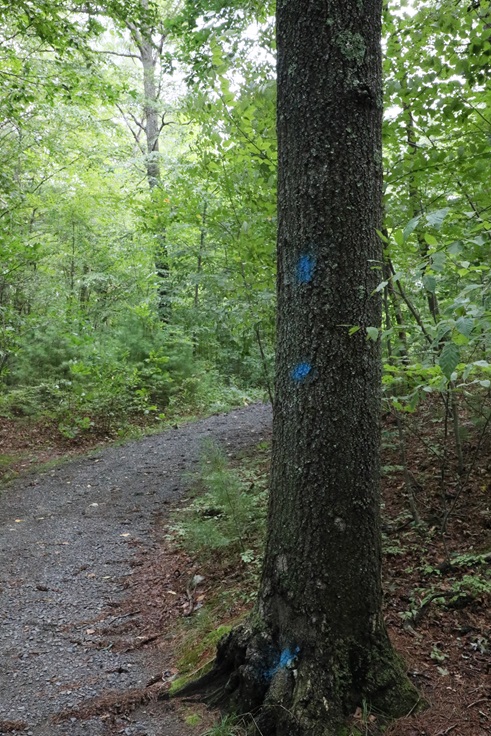Hazard Trees at Sessions Woods Wildlife Management Area
Where? While exploring Sessions Woods WMA, you will notice various trees with a blue mark. These are potential hazard trees that will be removed. While the chances of being struck by a falling tree or branch are low, being vigilant while in the woods can reduce these odds even more. 
What? A "hazard tree" has a structural defect that makes it likely to fall in whole or in part. A tree can be deemed hazardous due to age, disease, and fire.
When? Before trees are removed, Wildlife Division biologists will use bat detecting equipment to monitor bat activity in the forest. The timing of tree removal depends on the results.
Why?
- Dead trees are useful nesting areas and food sources for wildlife. Hazard trees that are within the interior of SWWMA, where people rarely go, will be left to enhance the habitat. Only ones that are near a trail and cause a risk will be removed.
- Removal of hazard trees eliminates the risk of falling trees to visitors and proactively reduces trail blockages by fallen trees following storms.
- Removing mature trees allows more sunlight to reach the forest floor, fostering the growth of understory vegetation, including shrubs and young trees that are critical for wildlife.
- Although dead trees provide nest sites and food for wildlife, only those immediately adjacent to trails at Sessions Woods are being removed.
Tree removal can benefit humans and the ecosystem by:
- Opening up the canopy: This allows more sunlight to reach the forest floor which will encourage new trees and shrubs to grow.
- Removing danger: If a hazard tree is located near a trail or heavily used area it can put visitors in danger, especially on windy days or when the branches are covered in snow or ice.
Content last updated on August 20, 2024.

